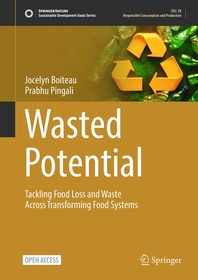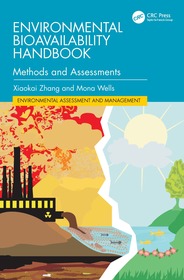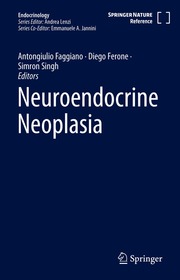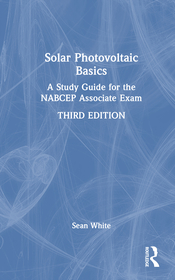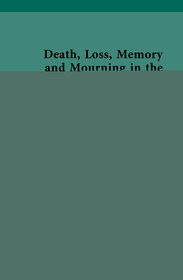
Death, Loss, Memory and Mourning in the Long Nineteenth Century, 1780–1914
Volume IV: Intellectual and Disciplinary Responses to Death, Loss, Memory and Mourning
-
10% KEDVEZMÉNY?
- A kedvezmény csak az 'Értesítés a kedvenc témákról' hírlevelünk címzettjeinek rendeléseire érvényes.
- Kiadói listaár GBP 110.00
-
52 552 Ft (50 050 Ft + 5% áfa)
Az ár azért becsült, mert a rendelés pillanatában nem lehet pontosan tudni, hogy a beérkezéskor milyen lesz a forint árfolyama az adott termék eredeti devizájához képest. Ha a forint romlana, kissé többet, ha javulna, kissé kevesebbet kell majd fizetnie.
- Kedvezmény(ek) 10% (cc. 5 255 Ft off)
- Kedvezményes ár 47 297 Ft (45 045 Ft + 5% áfa)
Iratkozzon fel most és részesüljön kedvezőbb árainkból!
Feliratkozom
52 552 Ft

Beszerezhetőség
Még nem jelent meg, de rendelhető. A megjelenéstől számított néhány héten belül megérkezik.
Why don't you give exact delivery time?
A beszerzés időigényét az eddigi tapasztalatokra alapozva adjuk meg. Azért becsült, mert a terméket külföldről hozzuk be, így a kiadó kiszolgálásának pillanatnyi gyorsaságától is függ. A megadottnál gyorsabb és lassabb szállítás is elképzelhető, de mindent megteszünk, hogy Ön a lehető leghamarabb jusson hozzá a termékhez.
A termék adatai:
- Kiadás sorszáma 1
- Kiadó Routledge
- Megjelenés dátuma 2025. november 6.
- ISBN 9781032282664
- Kötéstípus Keménykötés
- Terjedelem410 oldal
- Méret 234x156 mm
- Súly 453 g
- Nyelv angol
- Illusztrációk 6 Halftones, black & white 700
Kategóriák
Rövid leírás:
This four-volume interdisciplinary collection explores loss, memory, and mourning in the long nineteenth century. Accompanied by extensive editorial commentary, this collection will be of great interest to students and scholars of the History of Emotions.
TöbbHosszú leírás:
This four-volume interdisciplinary collection explores loss, memory, and mourning in the long nineteenth century. Primary sources explore death and mourning from literary, spiritual, historical, and intellectual perspectives. Accompanied by extensive editorial commentary, this collection will be of great interest to students and scholars of the History of Emotions.
TöbbTartalomjegyzék:
Volume IV: Intellectual and ‘Disciplinary’ Responses to Death, Loss, Memory and Mourning
Acknowledgements
List of Illustrations
General Editor Note
Preface
Introduction
Part 1. Representing Death and Thinking Through Mortality
1. William Dodd, Reflections on Death, (London: Carnan and Newberry, 1777), pp. 9-17, 57-59.
2. Anon, Cogitations Upon Death; or, The Mirror of Man's Misery, (Stirling: William Macnie, 1820), pp. 2-15.
3. W.H.R. Rivers, ‘The Primitive Conception of Death’, Hibbert Journal, 10 (1911), pp. 393-407.
4. Anon, Messenger of Mortality; or, Life and Death Contrasted, (London: Toy and Marble Publishing, 1832), p. 1.
5. Eliza Dupe, ‘The Antidote of Death’, in Happiness; or, the Secret Spring of Bliss and Antidote of Death, (Oxford: W. Baxter, 1860), pp. 88-107.
6. John Stuart Mill, ‘Immortality’ in Three Essays on Religion, (London: Longmans, Green, and Co., 1894), pp. 196-211.
7. William James, Human Immortality: Two Supposed Objections to the Doctrine, (Boston: Houghton, Mifflin, and Co.,1897), pp. 23-55.
8. Roden Noel, ‘Materialisation and Theosophist Theories’ in A Philosophy of Immortality, (London: W.H. Harrison, 1885), pp. 58-68.
9. William Lecky, ‘The End’ in The Map of Life, (London: Longmans, Green, and Co., 1899), pp. 319-328.
10. Louis Figuier, The Day After Death; or, Our Future Life According to Science, (MacMillan & Co., 1904), pp. 174-192.
11. Robert Hertz, ‘A Contribution to the Study of the Collective Representation of Death’ in Rodney and Claudia Needham (Eds.) Death and the Right Hand, (London: Routledge, 1960 [1907]), pp. 76-86.
12. William Brown, ‘The Recovery of Faith in Immortality’ in The Christian Hope: A Study in the Doctrine of Immortality, (New York: C. Scribner’s Sons, 1912), pp.145-164.
13. James Frazer, ‘Myths of the Origin of Death’ in The Belief in Immortality and the Worship of the Dead, (Vol I), (London: MacMillan & Co., 1913), pp. 59-87.
Part 2. Ending Life Gently: Facing Loss, Embracing Grief
14. Samuel D. Williams, ‘Euthanasia’ in Essays by the Members of the Birmingham Speculative Club, (London and Edinburgh: Williams & Norgate, 1873), pp. 1-11, 15-16, 28.
15. William Munk, Euthanasia; or, Medical Treatment in Aid of an Easy Death. (London: Longmans & Co, 1885), pp. 3-10, 72-77, 105.
16. Roden Noel, ‘Arguments for Human Immortality’ in A Philosophy of Immortality, (London: W.H. Harrison, 1885), pp. 148-171.
17. Charles Darwin, The Expression of the Emotions in Man and Animals, (London: John Murray, 1888), pp. 176-195.
18. Richard Davey, A History of Mourning, (London: Jays of Regent Street, 1889), pp.95-96, 104.
19. Anon, ‘The Aloofness of Grief’, Congregationalist, 74 (1896), pp. 506.
20. Pieter Henrik Kritzinger and Ramsay McDonald, ‘Dark Days’, In the Shadow of Death, (London: William Clowes & Sons, 1904), pp. 5-20.
21. Charles Letts, Emma; or, the Dying Penitent, (London: W. Glendinning, 1799), pp. 31-40.
22. Newman Smyth, The Place of Death in Evolution, (New York: Scribner & Sons, 1898), pp.1-43.
Part 3. Constructing Memory, Mourning, and Posthumous Identities
23. Joseph Jacobs, ‘The Dying of Death’, Current Literature, 26 (1899), p.348.
24. William Godwin, ‘Posthumous Fame’ in The Enquirer: Essays on Education, Manners, and Literature. (London: G.G. and J. Robinson, 1797), pp. 288-289, 292-293.
25. William Godwin, Essay on Sepulchres; or, a Proposal for Erecting Some Memorial of the Illustrious Dead of All Ages on the Spot where their Remains Have Been Interred, (London: W. Miller, 1809), pp. 1-5, 16-30, 111-114.
26. James Relly, ‘Reflections on Death’, Universalist Magazine, 49 (1820), p.194.
27. Thomas De Quincey, ‘The last days of Immanuel Kant’, Blackwood’s London Magazine, 155 (1827), pp. 159-166.
28. Thomas Carlyle, ‘Death of Goethe’, New Monthly Magazine, 138 (1832), pp. 374-84.
29. Jeremy Bentham , Auto-icon; or, Farther Uses of the Dead to the Living, (Unpublished, c.1842), pp. 2-7, 12-13, 16-17.
30. George W. Foote, Infidel Death-Beds, (London: The Pioneer Press, 1888), pp. 3-9, 13-14, 21-22, 26-27, 31-32, 46-47, 50-53, 54-56, 65-66, 83-84, 84-86, 90-91.
31. Maurice Maeterlinck, Death, (London: Methuen, 1912), pp. 17-18, 29-32, 37-38, 60-84.
Part 4. Embodying the Shadows: Life Beyond the Grave
32. Ebeneezer Sibly, A Key to Physic and the Occult Sciences, (London: Champante & Whitrow, 1795), pp. 122-126,185-195, 404-408.
33. Henry Sidgwick, ‘Presidential Address’ in Journal of the Society for Psychical Research, 3 (1888), pp. 35-45.
34. Andrew Lang, ‘The Comparative Study of Ghost Stories’, Nineteenth Century, 17 (1885), pp. 24.
35. Andrew Lang, ‘Ghost Stories Up To Date’, Blackwood’s Edinburgh Magazine, 155 (1894), pp. 47-58.
36. Edgar Sheppard, ‘The Palace Ghost’ in Memorials of St James’s Palace (London: Longmans Green & Co., 1894), pp. 335-339.
37. Annie Besant, ‘Death—and After?’, Manuals of the Theosophical Publishing Society, 3 (1906), pp 5-22.
38. William Brown, ‘Early Conceptions of the Future Life’ and ‘The Rise of the Doctrine of Immortality in India and Greece’ in The Christian Hope: A Study in the Doctrine of Immortality, (New York: C. Scribner’s Sons, 1912), pp. 23-34, 35-50.
39. George A. Gordon, ‘The Verdict of the Infinite’ in Immortality and the New Theodicy, (Boston: Houghton, Mifflin, and Co., 1897), pp. 105-130.
Index
Több






